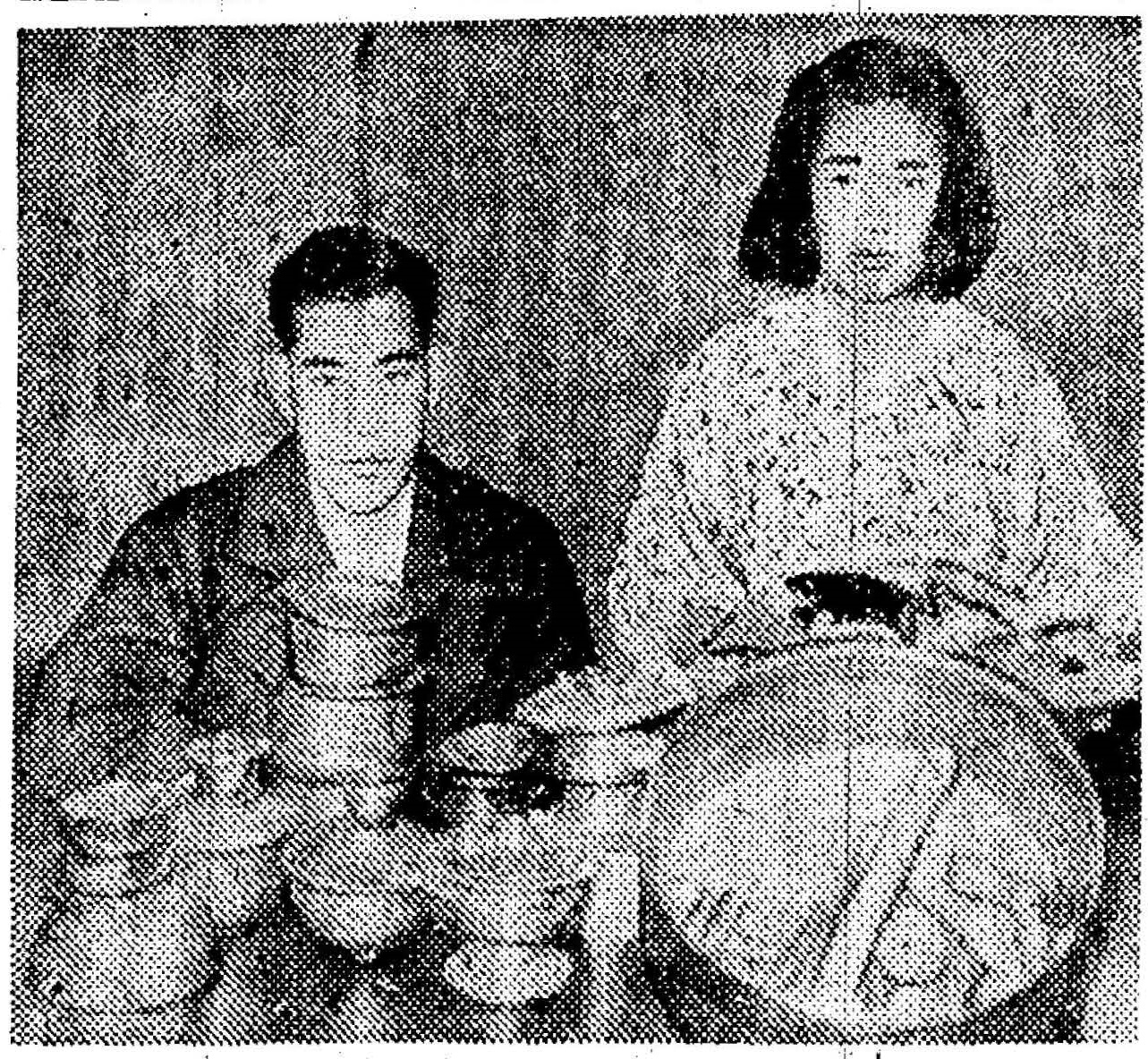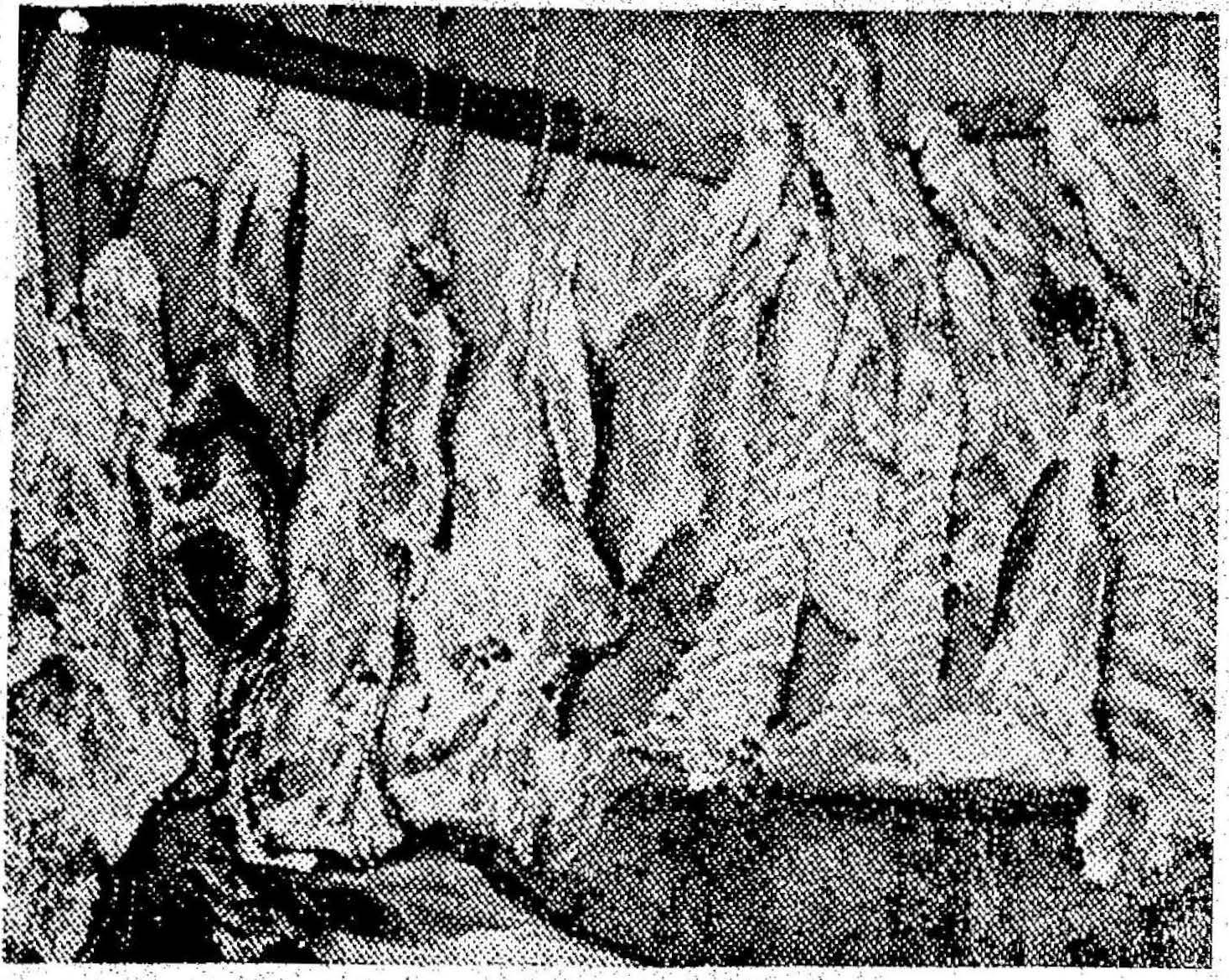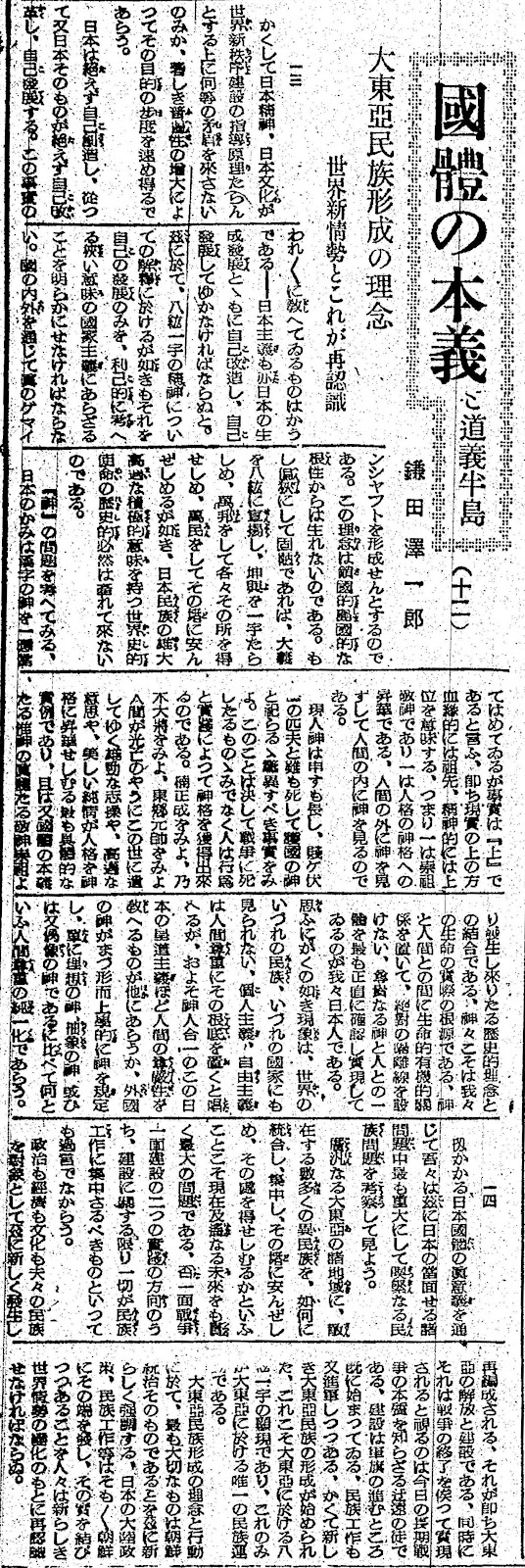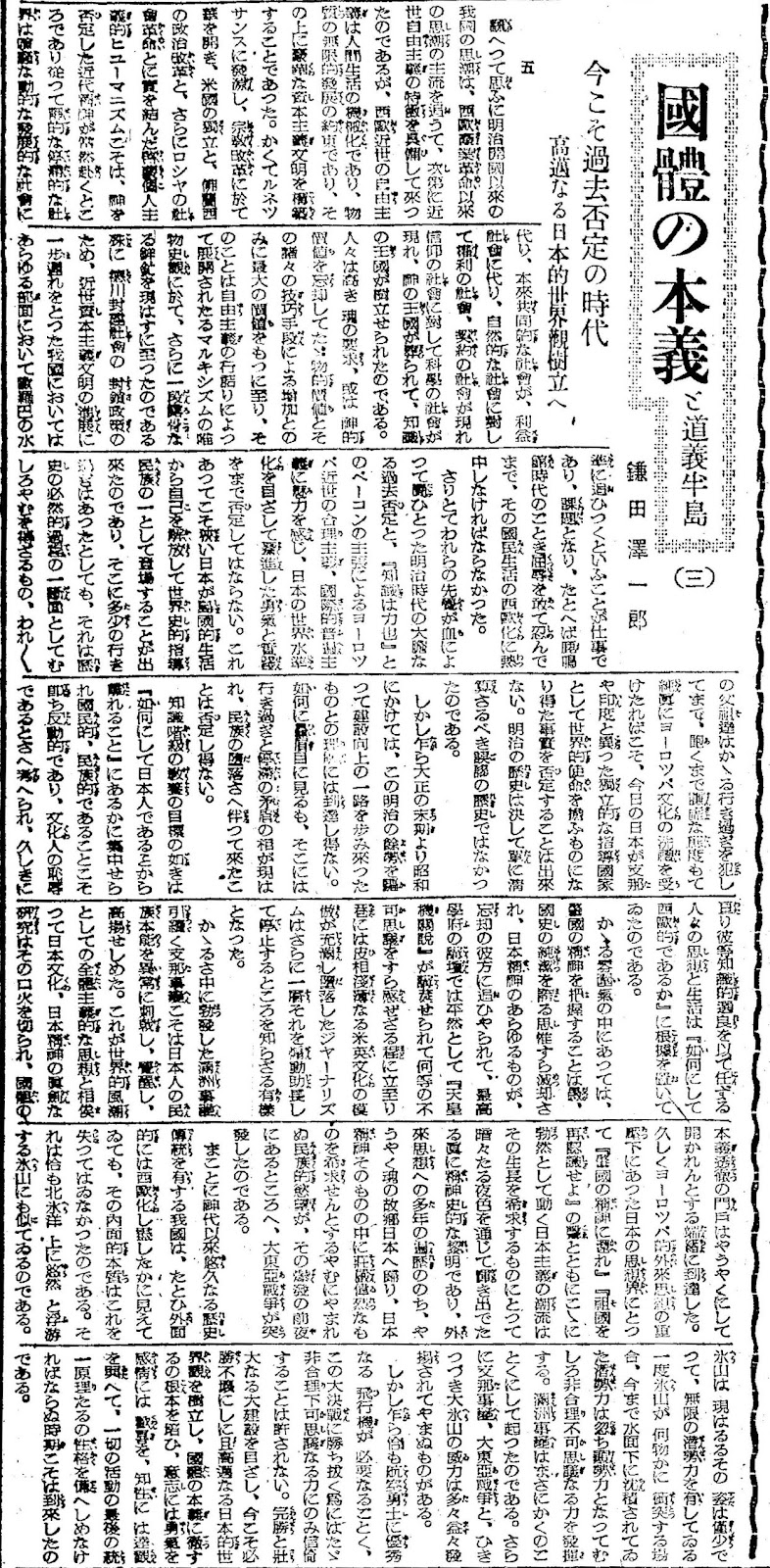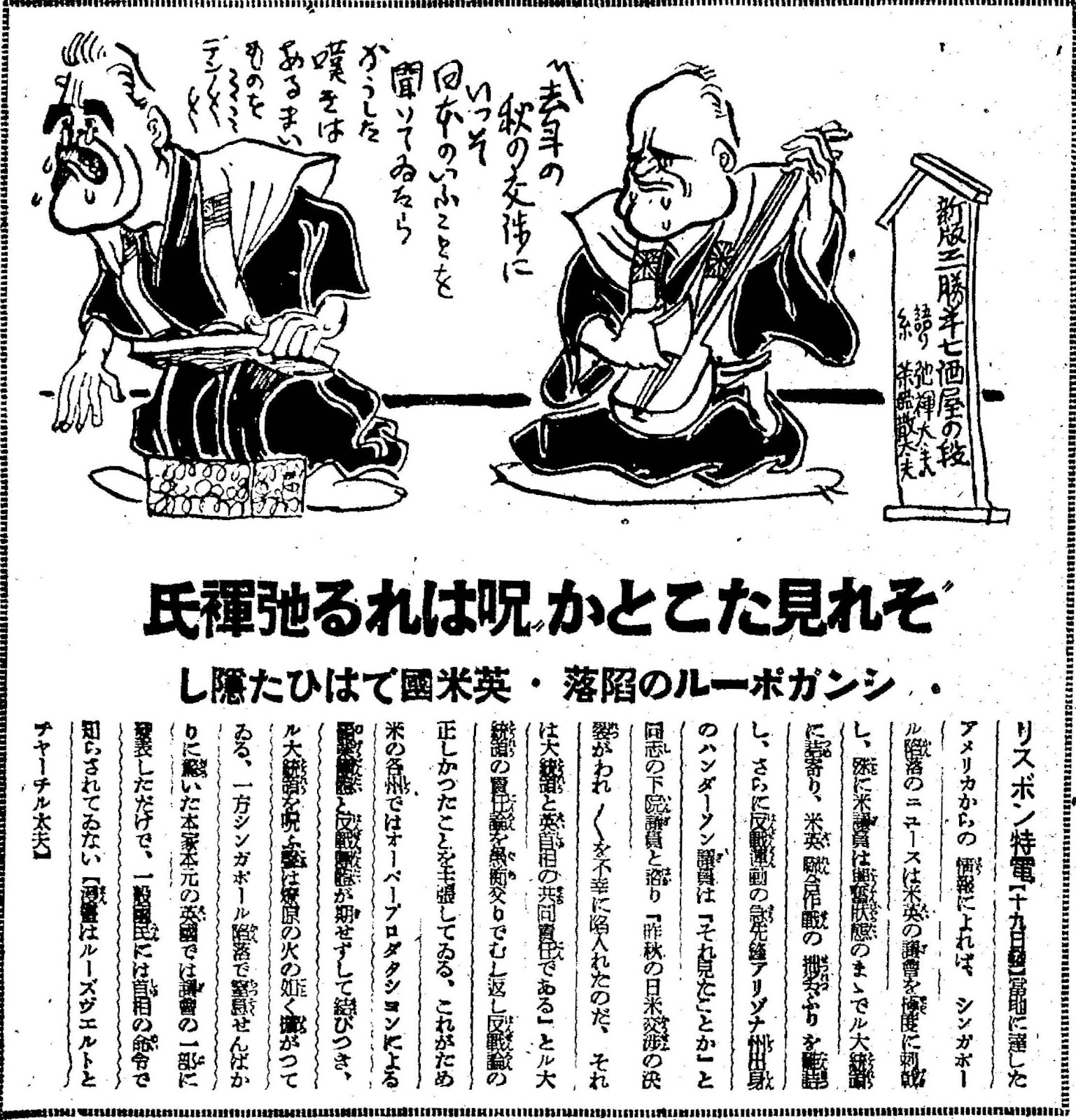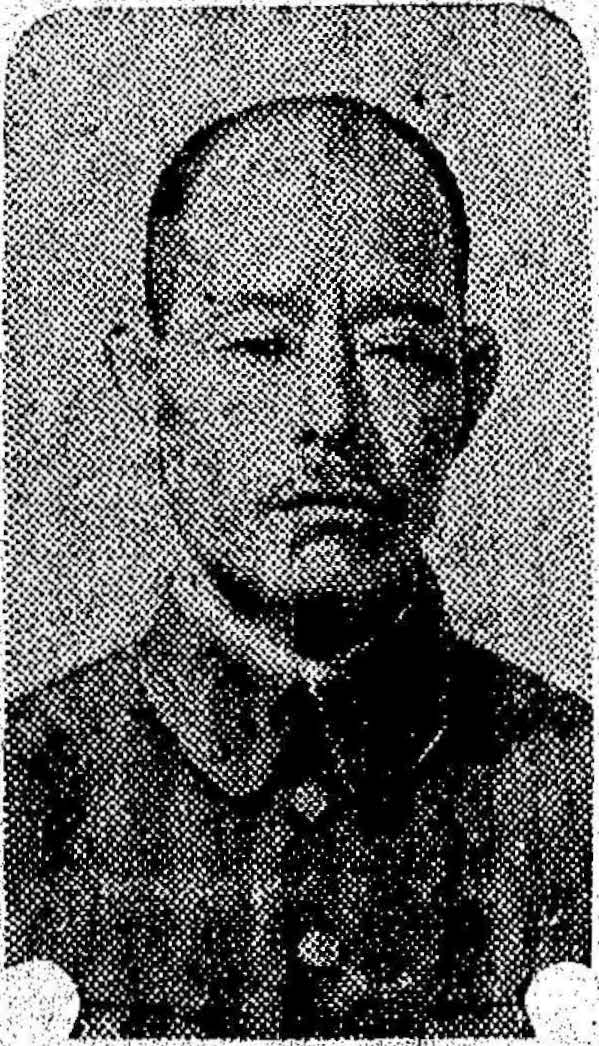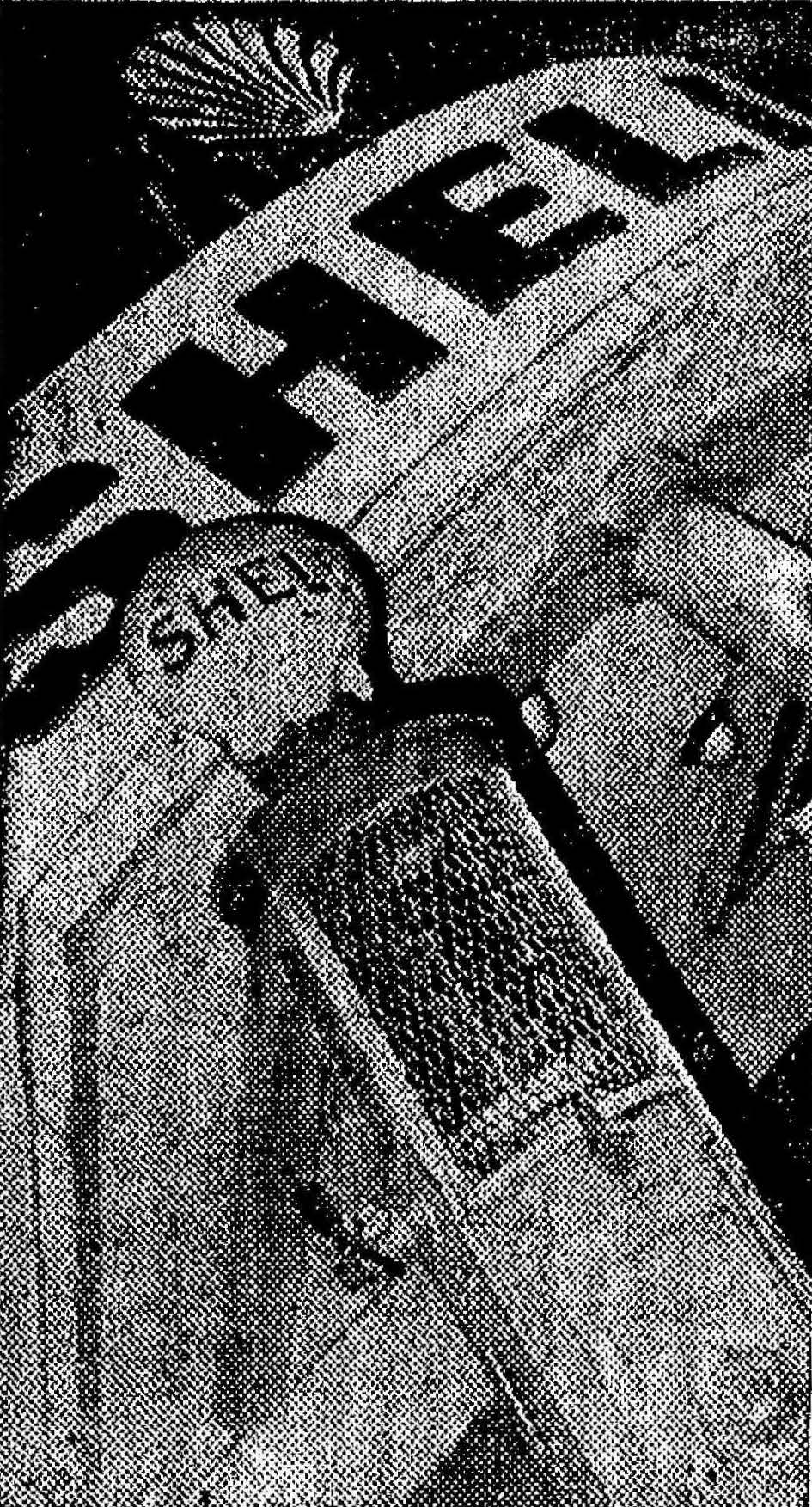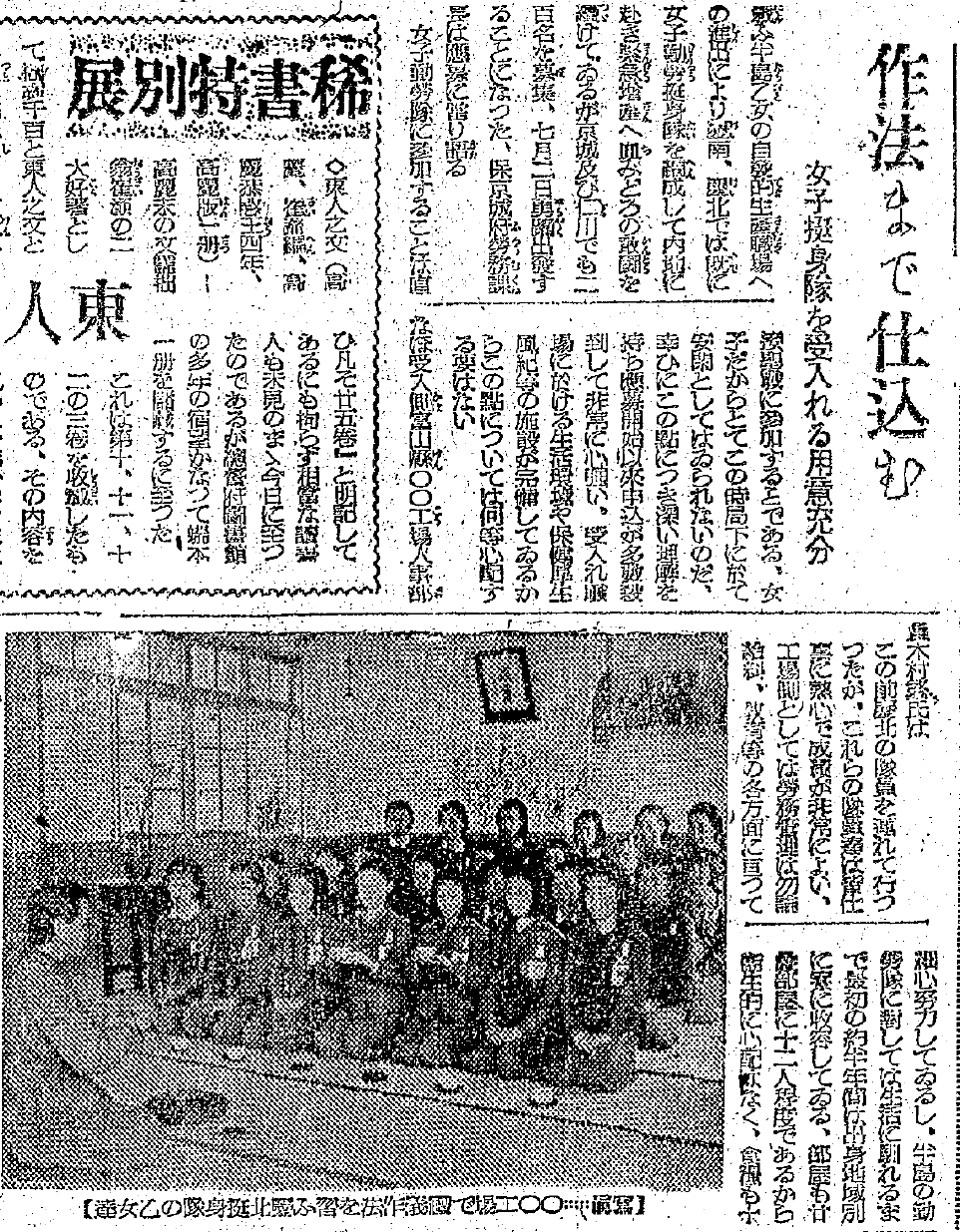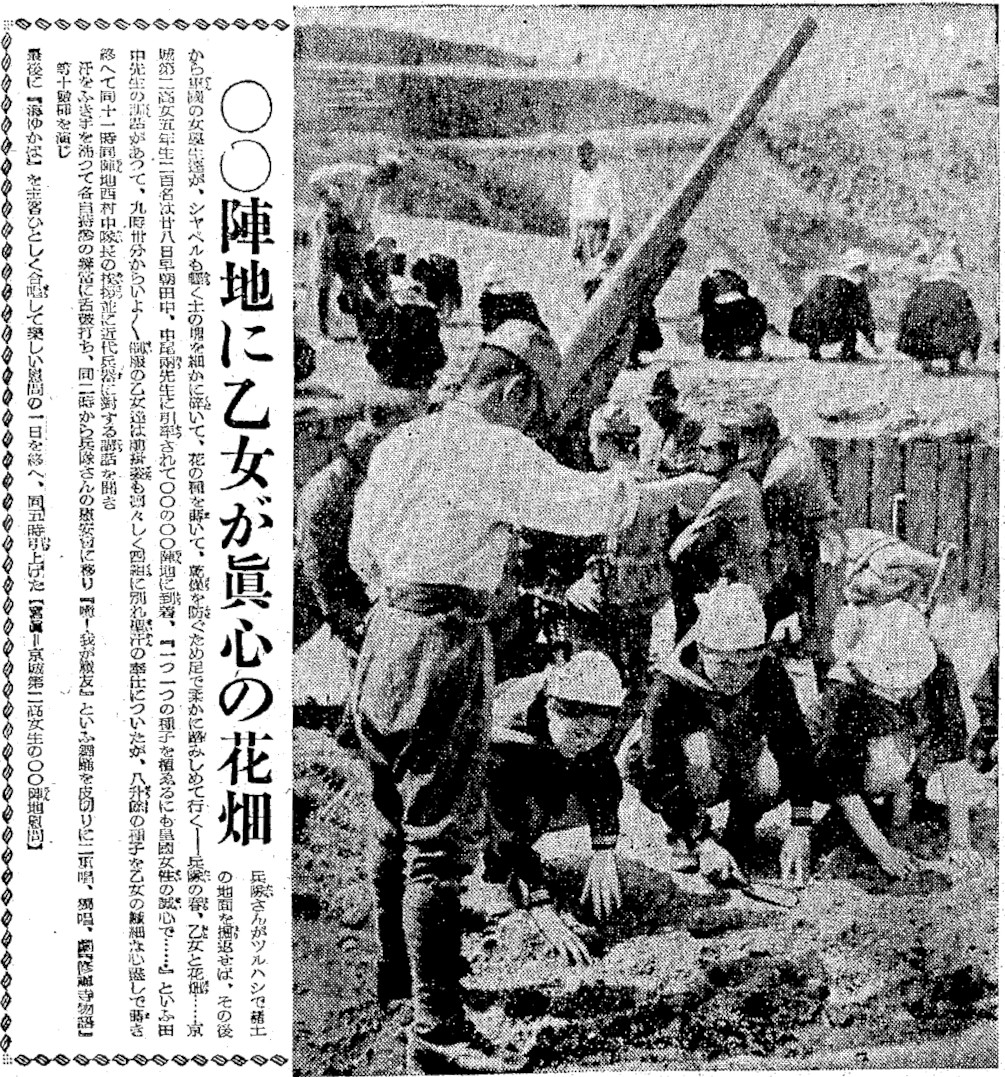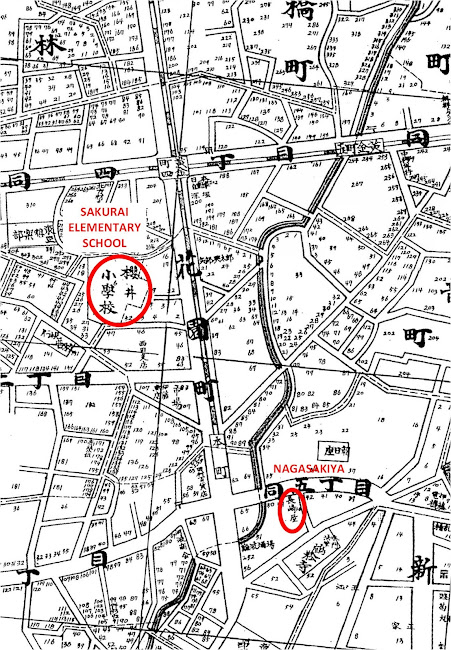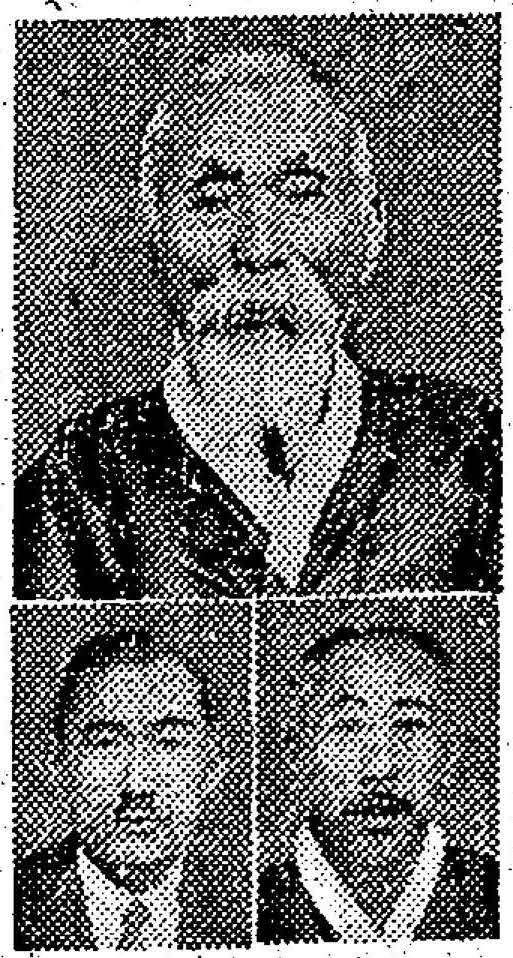
Propaganda story of Japanese couple adopting poor Korean girl, raising her to become a “respectable” Japanese woman, and marrying her off to a model Japanese-speaking Korean man (Seoul, 1942)
This is my translation and transcription of a news article from Keijo Nippo, a propaganda newspaper and mouthpiece of the government of Japan-colonized Korea. This has never been republished or translated before, to the best of my knowledge.
Source: https://www.archive.org/details/kjnp-1942-05-28
(Translation)
Gyeongseong Ilbo (Keijo Nippo) May 28, 1942
Japanese-Korean unification starts with the Japanese language
A Japanese policy-type “married couple”
A model marriage linked by the Japanese language
‘If you don’t know the Japanese language, I won’t become your wife’. Both the bride and the groom were equally insistent that they wouldn’t marry anyone unless they knew the Japanese language. After a secret investigation, it was discovered that the bride and groom were both from Japanese-speaking families. Here is a story about a model marriage in which the Japanese language was tied into everything from the Takasago play in which they performed to the conclusion of their marriage ceremony.
Now, let’s look into this admirable young couple and see what kind of lady this young bride is. The excellent bride is Ohana-chan (23), a housemaid employed by Mr. Sakuji Matsumura, managing director of Korea Transport at 404 Sindang-dong. She was born in Muan-gun, Jeollanam-do. Because her family was poor, she was wearing only a dirty jeogori and chima when she was hired by Mr. Matsumura in February, the coldest month of the year, when she was 14-years-old. Mrs. Misae Matsumura was at first worried about how to raise a girl who did not even understand the Japanese language.
She initially bought her a first grade textbook and taught it to her, showing her unchanging compassion and treating her as her beloved child. Accordingly, Hana-chan, who was naturally clever, picked up the Japanese language at an astonishingly fast pace in less than half a year. She learned Japanese to the point where she was able to do her daily chores without any trouble. As Mrs. Misae taught her how to do calculations on the abacus, even Mr. Matsumura threw up his hands in amazement at this country girl’s unusual, robust memory.
Ultimately, Mrs. Matsumura taught Hana-chan how to tailor Japanese-style clothes, and at the same time, she took her by the hand and instructed her in Japanese manners. This is how Hana-chan grew up not as a Korean girl, but rather as a respectable Japanese woman.
“She is now sewing even silk fabrics with ease! There is no other girl like her. She has become a true Japanese person. She is number one in Japan when it comes to devotion to her parents”, said Mrs. Misae, who praised Hana-chan with narrowed eyes and is now showing her affection as her true daughter. Hana-chan has sent all the money she has earned over the past ten years to her father Chui-wol, who is now a self-sufficient farmer with a farm of 4 tan and 7 bu (4,023 square meters, or about 1 acre). Of course, this is thanks to Hana-chan.
It was last spring when Mr. and Mrs. Matsumura started to have headaches worrying, “Hanako has reached an age where she needs to get married somewhere…” Respecting Hana-chan’s wish that “I will not marry anyone unless he is from a Japanese-speaking family”, they finally found a model artisan, Kenji Mishima (27) of Nagasakiya, a pastry store in Honmachi 5-chome famous for its kasutera sponge cakes.
This world number one groom is a genuine native of Seoul, and he started his career at Nagasakiya in 1933. He is now a fine artisan and one of the most treasured disciples of his master, Mr. Mori.
Hana-chan made a wish to her fiancé saying, “my husband, please be sure to make me a Japanese-speaking wife in our family”. To make this wish come true, their wedding took place as soon as possible, with the groom’s master as the matchmaker and party leader of the patriotic organization as their witness. They will prosper and children will be born to this ‘national policy’ couple. All of their children will eventually become second-generation Hana-chans and Kenji-kuns.
As a final note, both Hana-chan and Kenji-kun received Korean names at the times of their births, but at the request of both of them, their Korean names will not be listed here. Photo: Mrs. Misae Matsumura with Hana-chan.
(End of translation)
Earlier, I posted another article (A Korean father spent 8 years looking for the right prospective husband who only spoke Japanese) in which a Korean father arranges a marriage between his daughter and a Japanese-speaking man. These kinds of articles were apparently placed in this propaganda newspaper to encourage Japanese-speaking Koreans to marry each other in hopes of increasing the population of Japanese-speaking Koreans in Korea.
This article mentions a party leader of the patriotic organization acting as the witness for the couple. This refers to the Korean Federation of National Power (国民総力朝鮮連盟, 국민총력조선연맹), which functioned as the one and only political party that you could belong to in totalitarian Japan-colonized Korea, spreading the regime’s Imperial Way ideology across Korea and reinforcing Imperial rule over Korea.
The groom worked at Nagasakiya, a pastry shop in Seoul which was famous for its kasutera (sponge cakes). The store is visible in this 1933 map of Seoul:
This store appears to have disappeared from modern Seoul:
京城日報 1942年5月28日
”内鮮一体は『国語』から
国策型の”めおと”
国語が結ぶ模範結婚
国語常用の人でなければお嫁にいきません。国語を知らなければ嫁には貰わぬと双方が同じようにいい張って、さて内密に調査してみたらお互いに国語の家の男女だったというので、ここにめでたくも高砂や、あと結納が取り交わされたという国語が結ぶ模範結婚の話。
さて、その感心な花嫁御寮とはどんな婦人であろう。新堂町四〇四朝鮮運送常務取締役松村作二氏の下に使われている女中お花ちゃん(二三)がその優れた国語花嫁である。お花ちゃんは全南務安郡の生れて家が貧しいために、十四の年の寒い二月に汚れたチョゴリとチマ一枚で松村氏宅に雇われたのだ。みさ江夫人は、この国語も解せぬ一少女を”どんな工合に育てたものか”とまず苦心した。
取り敢えず小学一年生の読本を買い与えて夫人自ら講師となって教えこんだ。愛児へ対する少しも変わらぬ夫人の慈しみに生来利発な花ちゃんは半年経たぬ間に驚く程の速さで国語が解るようになり、日常の用務には事欠かぬ程度となったので更に夫人は算術算盤を次々と仕込んでゆく中にこのまれにみる田舎娘の記憶力の旺盛さに流石の松村氏も手を上げた。
かくして最後は和服仕立てを教えると同時に日本式の作法について夫人が手を執るようにして指導したので見る見る花ちゃんは半島娘としてではなく、立派な内地婦人の如く完成されて行ったのである。
『今は絹物でも平気で縫いますよ。こんな珍しい娘はありません。全く日本人ですよ。そして親孝行なことは日本一です』と目を細めて花ちゃんを賞めるみさ江夫人は今は真実の娘として慈愛を垂れているのだ。苦節十年頂いた給金は全部父翠月さんに送って、その父も既に四段七歩の自作農となっている。これも花ちゃんのお陰であることは勿論のことだ。
『花子も年頃となったから、どこかお嫁にやらなくては...』と松村氏夫妻が頭を痛め出したのは去年の春からだったが、『私は国語の家でなければお嫁に参りません』という花ちゃんの意志を尊重して漸くこのほど探し当てたのが本町五丁目カステラで有名な長崎屋の模範職人三島健次君(二七)だった。
この三国一の婚鑑は生粋の京城っ子で長崎屋に年期を入れたのが昭和八年。今では立派な職人として主人毛利氏の秘蔵弟子の一人だ。
『御主人、私の家は是非国語婦人にして下さいよ』という願い叶って、めでたく双方は来る早々結婚式を挙げることとなったのだが、仲人は水入らずの主人夫妻、立会人は愛国班長に頼もうという今からの取り極めだ。やがては栄え行くであろうと、この国策夫婦の間に生れる子等のすべては何れは二世花ちゃんや健次君になることであろう。
最後にいい残したが、花ちゃんも健次君も生れた時の朝鮮名は持っているが、御両人の希望によって、ここには載せぬこととする。【写真=松村みさ江夫人とお花ちゃん】

